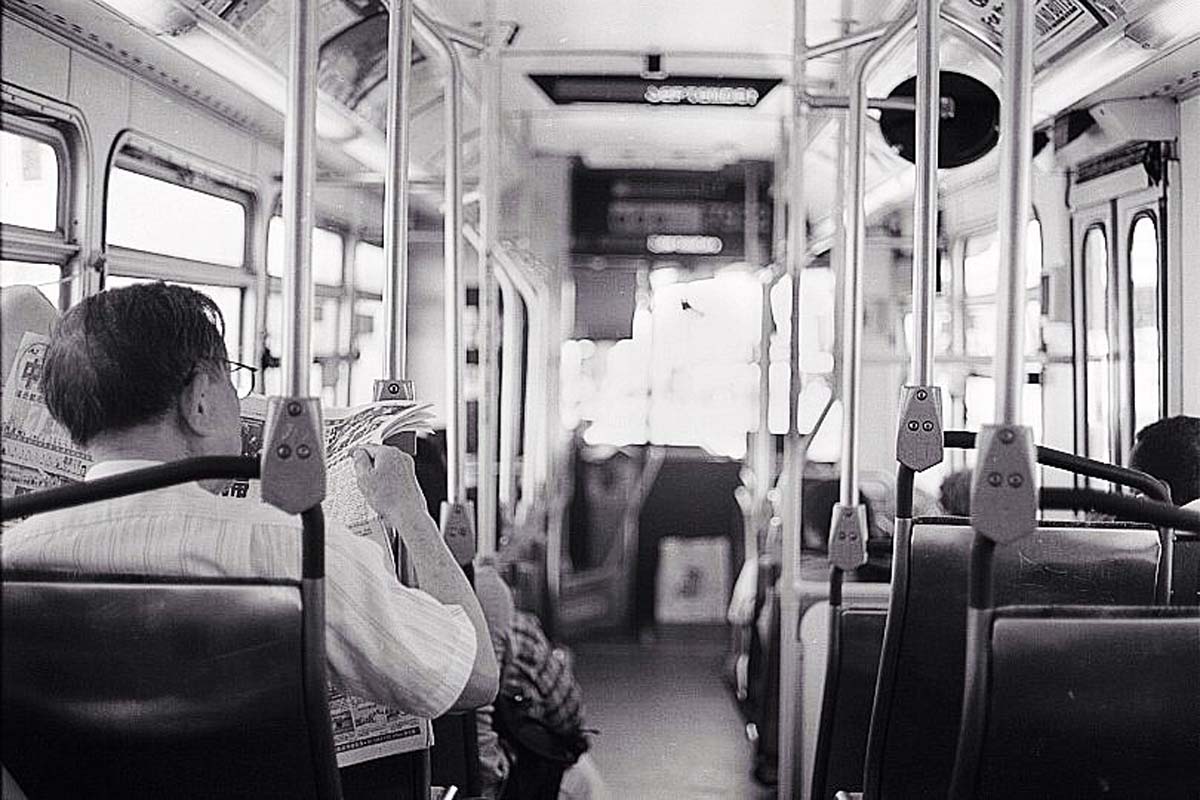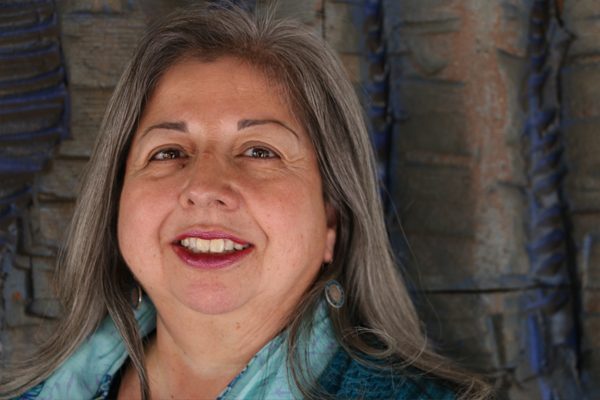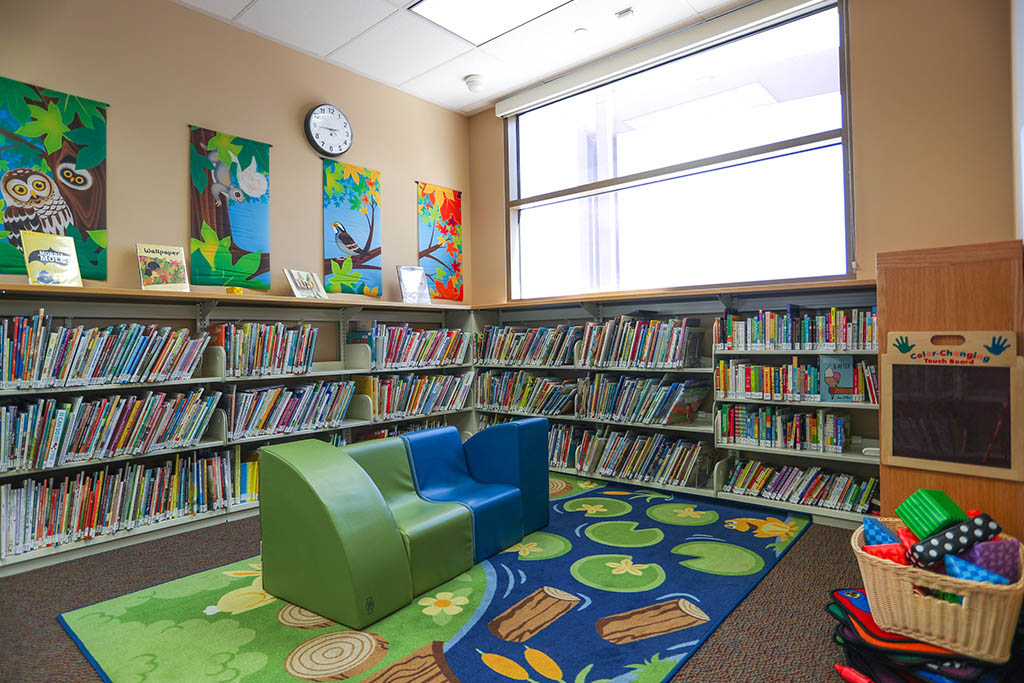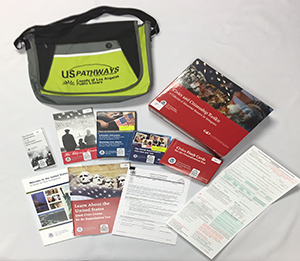Padrino

I met Padrino in a dream before I met him in person. I dreamt about a man with a horsetail whisk, dancing and waving it around his head. He was dressed in white. I told Costello, my boyfriend, about my dream.
“That’s my padrino,” he said. His godfather.
He wasn’t just Costello’s padrino; he was his surrogate father.
After leaving the City (and Costello) in 1989, returning home to Southern California, crossing the Bay Bridge from Alameda County to San Francisco for a visit with Padrino was thrilling. I loved S.F. Our first stop was Padrino’s flat on 23rd and Guerrero, just west of Mission Street. He was a fixture in the neighborhood. Every day he sat in the window facing Guerrero Street waving at the passersby. We’d usually be lucky enough to park on Guerrero Street and from the window Padrino would get his first glimpse of Alex, his pedacito de oro, piece of gold.
In his flat, Cuban food was always cooking: black beans, white rice, yucca, fried plantain, and meat dishes like ox tail, ropa vieja, a beef stew, or lechón, roasted pork. Often intermingled in those scents was the smell of marijuana, which he smoked to alleviate the pain from arthritis.
Padrino was already elderly when I met him. He was tall, slender, and always well-dressed in white; white shirt, white sweater, white pants, white shoes and white socks. He wore copper bracelets on both wrists, “For the arthritis,” he said. His glasses sat atop his wide nose, and he spoke Spanish with an unfamiliar accent. In the beginning it was difficult for me to understand him because he cut off the final “s” sound on most words. In my limited world, I thought everyone in California spoke Spanish like a Mexican.
Padrino was everyone’s godfather. I rarely heard anybody call him by his given name, Oswaldo. He was “Padrino” to all. Padrino was a Santería priest; he practiced a religion, which fused African Yoruba beliefs with Catholic traditions that evolved when Africans were brought to the Caribbean as slaves. His house was always full of people; all of them godchildren or godchildren-in-the-making from Petaluma, San Francisco, New York, San Diego, Miami, and Ecuador. For a long time, I just thought he had baptized a lot of children. Most of them spoke Spanish, some better than others; many only spoke English, but were still able to communicate with him.
At one time, I wondered aloud to Costello why Padrino wasn’t in a relationship and didn’t have his “own” children. He looked at me like I was an idiot –“He’s gay.” Padrino had elevated four godsons to the rank of son; Frankie, Costello, Juan and Johnny. He had godchildren in abundance, but I never knew him to have a partner; he was a celibate Santero.
I had no clue what Santería was. I was born and raised Catholic, and I recognized some of the Catholic saint names: Santa Barbara (St. Barbara), Virgen de Mercedes (Our Lady of Mercy), San Isidro (St. Isadore) and San Lázaro (St. Lazarus). I was accustomed to seeing life-like statues of the saints. Padrino had an entire room dedicated to the santos, but these were large ornate urns or soup tureens draped with beads. Each one had a particular color associated with it: blue for Yemaya, the Virgen; green for San Isidro; purple for San Lázaro. People from Florida, New York, Los Angeles and the San Francisco Bay area paid him to persuade the santos to grant their wishes or to heal them. On other occasions he would read the caracoles, small cowrie shells that were tossed onto a circular woven mat and then “read” or interpreted.
Someone once told me that San Francisco was the closest thing to New York City on the West Coast. I suppose Padrino’s flat was like a New York row house. I had never been in an apartment that long. Entering from 23rd Street, the door opened and the hallway stretched from here to eternity. To the immediate left was the parlor that connected to the santo room; the sacred space. Only a few were allowed to enter. Fabrics of white satin, tulle and brocade covered the walls and hung from the ceiling. At the center was the Virgen de Mercedes, a hand-carved wooden statue of Our Lady from Cuba. Bowls of fruit were stationed in front of the urns and glasses of water were strategically placed throughout the room as offerings or to absorb the evil spirits. The hallway ended at the kitchen and off the kitchen was the laundry room where Padrino kept doves and Pancho, an African gray parrot that liked to munch on meat. To the left of the kitchen was the dining room/den where Padrino spent most of his leisure time lounging in his recliner by the window facing Guerrero Street, watching and listening to operas like Turandot or Madame Butterfly. At the back of this room, almost an afterthought, was his large bedroom.
The first time I went to the flat, Costello left me waiting in the parlor for an hour. I was ready to leave, and I could hear from the back of the house the Old Man scolding Costello that I was going to leave. Maybe that’s why I stayed with Costello – I was curious about this man. Padrino knew, without having met me, that I was going to leave. Aside from my initial dream, that was the first time I experienced his gift.
As my relationship with Costello grew, so grew my relationship with the Old Man. When I became pregnant, he was ecstatic. He would have a grandbaby to coddle and coo over. He took care of me, and I grew in his esteem. When his other godsons came to visit, I was introduced as Alex’s mom. I eventually rose in rank to daughter-in-law and, finally, daughter. After Alex was born, I returned to my job. I had tried traditional daycare, but money was tight, and I knew I could always count on Padrino and Juan, another godson/caretaker, to babysit. Padrino doted on Alex. He rocked my baby to sleep and whispered into his tiny ears. Dinner was always provided. They became my surrogate family. Even after Costello passed in 1994, Padrino and I maintained our kinship.
When times were tough, Padrino assisted me financially. I, in turn, provided him with a grandson. After Costello and I split up, I returned to Los Angeles with Alex and found work as a teacher. However, we would visit Padrino two to three times a year. When Padrino discovered that I could sew, I was entrusted to make and dress the Virgen. No expense was spared for her gown and cape. Every September 23rd we celebrated her feast day. Juan cleaned the house from top to bottom, but more importantly cleaned the santo room. We left offerings of food. The house filled with guests, godchildren, and other santeros from the East Bay. It was a party. Salsa music permeated the house, with congas, chants, and dancing in the hallway till the early morning hours. Everyone was expected to dress in white. White was important because it was like Teflon; the bad spirits could not stick to a person dressed in white. I discovered this one day when pregnant. The Old Man told Costello to ask me not to wear black. It was bad for the baby, the spirits would penetrate my womb.
Once back home in L.A., Padrino and I spoke regularly on the phone. He knew if I was anxious or stressed (usually about money). He bought us our first television. When I moved to the house on Stewart in Baldwin Park, I told him that I had carpet installed and he casually remarked, “The color green was a good choice.” I didn’t even ask how he knew. Even if I didn’t need anything, he would call and tell me he was sending money via Western Union. In return, as my finances improved, I was able to purchase things he wanted or needed. On one visit I purchased a dining room set from Montgomery Ward’s in Daly City; his was cheap and one by one the metal frame chairs had become loose or broken.
Over the next few years, he would fly in to Los Angeles, and I would take him to visit old friends from Cuba and a few Santería clients in Hollywood. We never really talked about Santería, but at one point he asked me if I wanted to be initiated and I said, “No.”
On January 10, 1997, Juan called. Padrino had died. He was found in his flat on 23rd and Guerrero. Not seeing him sitting by his window as usual, a neighbor peered in to see him lying on the floor. He had a heart attack. Someone was able to get in, but he was already dead. Juan also explained that the coroner wouldn’t release Padrino’s body to him. It had to be a blood relative. Padrino’s only living relative was his sister, Aida, who lived in Miami and was too old to travel. I called the detective. I needed proof; an I.D, a marriage certificate, something that identified me as a relative. I had nothing to show.
Alex and I flew to San Francisco. The godsons were anxiously waiting. We made it to the City about 4:00 p.m. — just enough time to make it to the Coroner’s Office. I said a little prayer before entering the building. The detective presented me with papers to sign, but never asked for any identification.
Early the next day, Juan, Johnny, Galo and Tito, the primary godsons, went to make the final arrangements at a funeral home on Valencia Street. As Tito wrote out a check for the burial, I remember the young woman behind the desk looked up at him and gaped, “You’re Tito…” He smiled and nodded. Tito Puente was one of Padrino’s godsons and paid for his funeral.
Padrino’s body was sent to the funeral home where the godsons attended to the Old Man’s body. Since I was not initiated, I was not privy to these rituals.
I knew the Old Man didn’t care about a funeral Mass, but I wanted to say a few Holy Marys for his soul and my peace of mind. The lid was closed on the casket. Inside next to Padrino lay his cherished hand-carved Virgen de Mercedes.
But in the Santería, a babalawo, a high priest who divined with the spirits, needed to be present. The santos, themselves, would “speak” to the Babalawo to determine their own fate. Padrino’s urns and soup tureens would be distributed or destroyed. We waited all night at Padrino’s flat until the babalawo arrived from Miami. As Alex and I sat in the Old Man’s recliner in the den, we were given white cloths and instructed to keep our heads covered until the ceremony was complete.
Hours later, Alex was given San Isidro. I inherited Yemaya. Several other santos found new homes. Juan was instructed to destroy the remaining few. The only thing I wanted from the Old Man’s house was a black and white photo of Padrino and Alex that hung in the dining room.
Padrino is buried in Colma, a city of cemeteries, just outside of San Francisco. I went searching for his plot a couple of years back, but got lost. The cemeteries looked the same, and we hadn’t purchased a headstone for the Old Man. I even tried looking for the funeral home on Valencia Street to get the name of the cemetery, but I couldn’t find that, either.
Padrino is lost atop one of those hills overlooking the bay, resting no one knows where.
A few of his santos remain in my possession; two in the dining room and San Isidro in the backyard. Maybe it’s time to take better care of them; maybe it’s time to call my god brothers.

September 4, 2016










